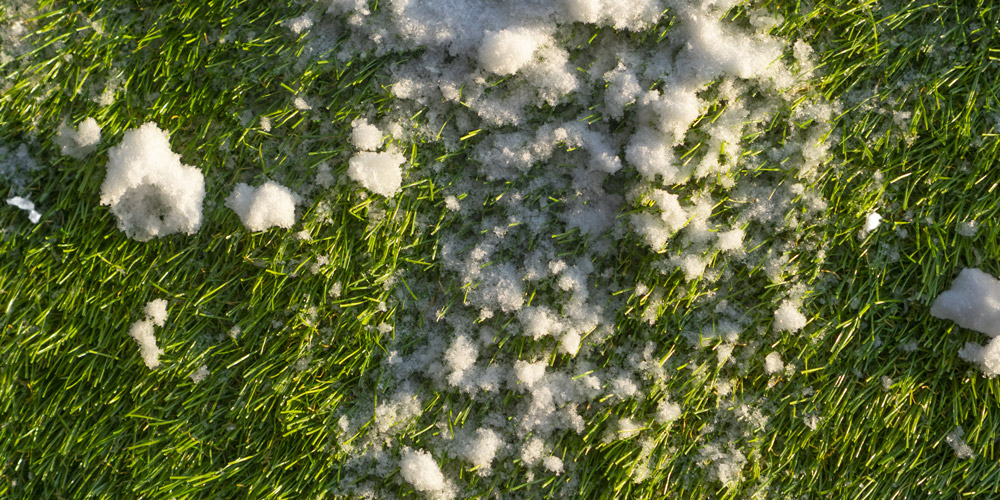Tips for Installing & Maintaining Turf in Snowy Areas
Winter is coming and bringing along its companion, snow. However, the incoming visitors of rain and snow will not harm your turf or your plans to install turf. With some preparation, you can claim victory over the harsh months. Below are some tips to provide guidance during this winter season.
Tips for Installing Turf When It Snows In Your Area
If you are planning to install turf in snowy areas, these are some things to take note of:
- Add a thicker layer of base rock before adding turf so drainage isn’t an issue. Drainage is critical so that when snow melts, there is maximum drainage. When it will be snowing on your artificial turf, you should do 1-1.5” of decomposed granite, but 4-6” or more of base rock to ensure there is optimal drainage.
- Check that the turf is dry prior to adding infill. If there is too much moisture, the infill can stick to the fibers.
For more general installation tips, check out our installation page or our blog post about reducing lawn frost damage.
Tips for Maintaining Turf in Snowy Areas
Prepping your turf: It is a good idea to remove any lingering leaves from your turf before the winter season starts. This way there won’t be any debris built up that could contaminate the turf. After clearing the ground, rinse the area with your hose to get rid of any dust or other residues. Lastly, use a turf-safe broom to lightly brush the surface. Now, your turf is ready for the upcoming winter! Lastly, don’t forget to repeat the process again once the snow melts.
Avoid salt: It is not recommended to use salt or other snow-melting products on the turf as snow should be left to melt naturally. Using salt will leave behind a residue, just like when using the product on a concrete driveway.
Snow removal: It’s easy to remove snow when installing turf in snowy areas. You just need a plastic shovel. Metal shovels may cause damage to the blades. You can also use a turf-safe brush to sweep a modest amount of snow away. It’s easy to remove snow when installing turf in snowy areas.
Practice caution when walking: Individual blades may freeze and become more brittle. However, no damage will be done if you use caution when walking on the turf. Once the snow melts and it is sunny out, the blades will not be standing up and fluffy. General maintenance may be required to “fluff” the turf and you can accomplish this by using a turf-safe brush.
Choose Artificial Grass From Watersavers Turf For Battling the Snow
In severe weather conditions, natural grass will die off, but artificial turf will not! If you are extremely concerned and want the ultimate piece of mind, you can protect your turf by covering it with a tarp. Visit any one of our Watersavers locations for tarps and other landscaping supplies.
If you have any other questions, feel free to give us a call at 844-974-8873 or fill out our contact form.

